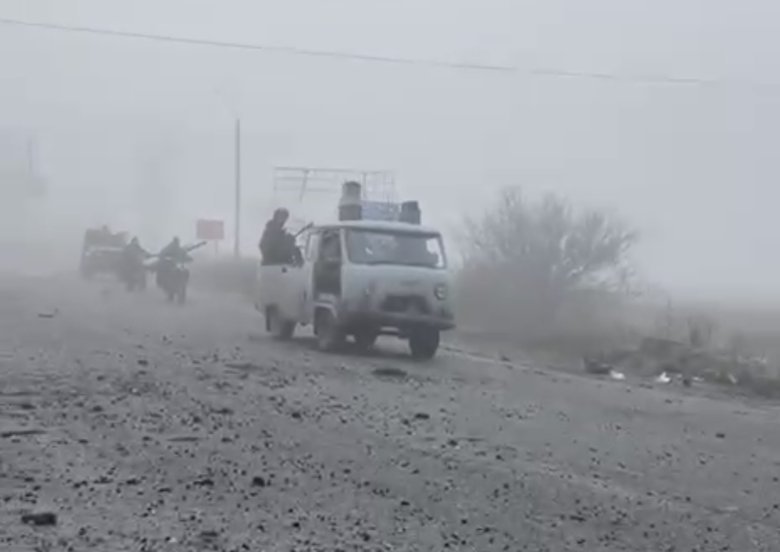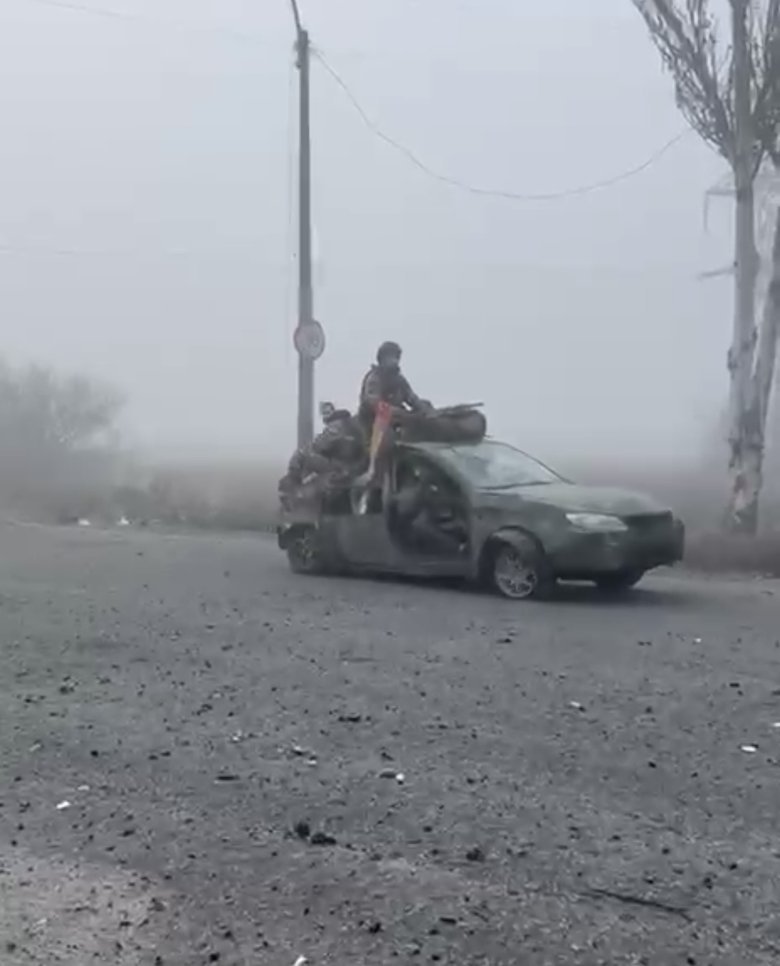"Enemy has begun to infiltrate Pokrovsk because our units are short of manpower and we cannot maintain tight defensive line."
Colonel Serhii Tretiak, commander of the 68th Brigade, holds this view; his infantry are positioned not in the city but to its south. To enable pilots to drop water and ammunition onto the positions, they are provided security, as over the past month the brigade’s pilots have repeatedly been drawn into small-arms firefights, and the signals troops captured a prisoner in recent days.
The situation in Pokrovsk remains tense. Many commanders whose troops are in the city, sent there to clear out occupying forces, sum it up in a single word: "chaos." There are effectively no fixed positions; it is unclear who is located where, and communications with groups can be impossible to establish for several hours a day. Meanwhile, the enemy is already attempting to drive into the city: our units observed at least three attempts to dash in on motorcycles late last week. One UAZ carrying personnel was set ablaze...
In a conversation with a reconnaissance officer working on this axis, I heard the view that the Russians already consider the Pokrovsk question settled and that the command needs to pull people out of the pocket that has formed south of the city before it is too late. Command should already be thinking about the defence of Kostiantynivka, because the enemy is actively redeploying forces there. In a couple of weeks, a situation similar to what happened near Pokrovsk could unfold there as well.
Asked how the enemy managed to get into Pokrovsk and Myrnohrad, Colonel Serhii Tretiak, commander of the 68th Oleksa Dovbush Jaeger Brigade, told Army TV journalist Yevhen Nazarenko: "They penetrated the city by massing manpower and sending it forward. We are trying to maintain a tight defensive line, but because weather conditions are not always suitable for UAV flights to expose enemy movement, they are exploiting this and looking for ways to slip between our positions. And we cannot keep a tight defensive line along the entire forward edge because we lack personnel. We don’t even have enough pilots to have eyes on every metre of our sector."
Such attempts to enter the city came in waves. Groups of 30–40 men advanced in pairs every five to seven minutes. "While we focus on the first three pairs, the fourth or fifth find a gap to slip through. The enemy build-up went on for more than a day," Serhii Tretiak noted.
The brigade has been fighting south of Pokrovsk for over a year. "In practice, the city served as our rear," the brigade commander said. "So the enemy now present inside the city creates a clear problem: their presence disrupts our logistics." While the infantry continues to hold positions outside the city, other elements, mortarmen, signals troops, and UAV pilot crews, have found themselves in small-arms engagements inside the city. Tretiak calls what is happening in Pokrovsk now "Brownian motion." It has long been impossible to drive vehicles into the city, not because of large enemy numbers, but because the airspace is saturated with FPV drones and Mavics carrying drop munitions that pounce instantly on any vehicle and destroy it. That is why, for more than a month, troops have been moving to tasks exclusively on foot.
"In a vehicle, electronic warfare may fail to kick in, and with the engine running you don’t hear what’s around you," Serhii Tretiak explained. "So it’s vehicles that are hit most often by FPVs and munitions drops. But when you’re on foot, your primary EW system is your ears: a soldier hears something coming and immediately seeks cover."
Until recently, the 68th Brigade’s pilots were striking the enemy on the outskirts of occupied Selydove, from where they were attempting to assault our positions. "As soon as we take out the enemy’s electronic warfare, our pilots’ effectiveness rises sharply," Tretiak said. "Two weeks ago, we were hitting enemy equipment in Selydove, setting vehicles ablaze. Within three days, as a rule, the enemy restores its EW and builds it up. Working becomes harder. As of now, we cannot reach that area, and there are several reasons: the weather has changed, they have added more EW assets, and we had to pull our pilots back a bit because there is a lot of work along the forward edge." The pilots are now focused less on striking the enemy and more on getting everything needed to our own infantry in the trenches; they monitor to ensure the enemy does not come close to our positions. If the enemy attacks, they immediately alert the infantry to its origin and strength, and conduct munitions drops to prevent a close small-arms engagement.
But the situation has shifted so much that even those responsible for bringing in supplies must be ready to fight with small arms. "Last week my signals troops took an enemy soldier prisoner," Tretiak said. "They ran into a four-man group in the city. One survived. We handed him over."
When we hear incredible stories about people who stayed on their positions for a month, two, three, or even longer, we should understand right away: this is not about their choice or sheer audacity, though without endurance, courage, and the will to survive, they would not have lasted so long in the trenches. It is about the fact that they cannot be rotated out of those positions. For me, one of the symbols of this war is a commander who, furious at his own helplessness, allowed himself the weakness of venting everything in front of me, shouting that he could not rotate his men off the line, could not pull them out of there… And another commander, whose troops walked out of an encircled city a year ago, enduring angry words from subordinates and their relatives, said: "But they didn’t hear how and what I said to the commanders above us, who ignored our decisions and demanded the impossible, driving the situation into a deadlock. I shouted, I argued, I demanded… And still I ended up being the one blamed by my own."
…Yesterday morning, the Russians were already driving into Pokrovsk from the direction of Selydove in an actual column. In a 30-second video I counted at least 12 motorcycles, five jeeps, and one UAZ van carrying enemy personnel. Specialists say there were at least two snipers in the group. Not all of them made it into Pokrovsk, of course, but on the axis where they were pushing, there was no way to oppose them.
Screenshots from a video posted on social media by an occupier who filmed the column directly on the road.
The main question now is how the troops still holding positions south of the city will get out of the "not-an-encirclement." With each passing day, their situation is becoming more dangerous. And there are still no orders to pull them out.
Last night, the Commander-in-Chief put out word that there are "plans B and C for all scenarios" in Pokrovsk, and that "the Russians slipped through our engineer obstacles only in a few places, and the situation is under control." Perhaps he has not yet been shown the video I saw, because the Russians are no longer slipping through, they are entering the city. And the phrase "the situation is under control" already makes me twitch...
Violetta Kirtoka, Censor.NET



